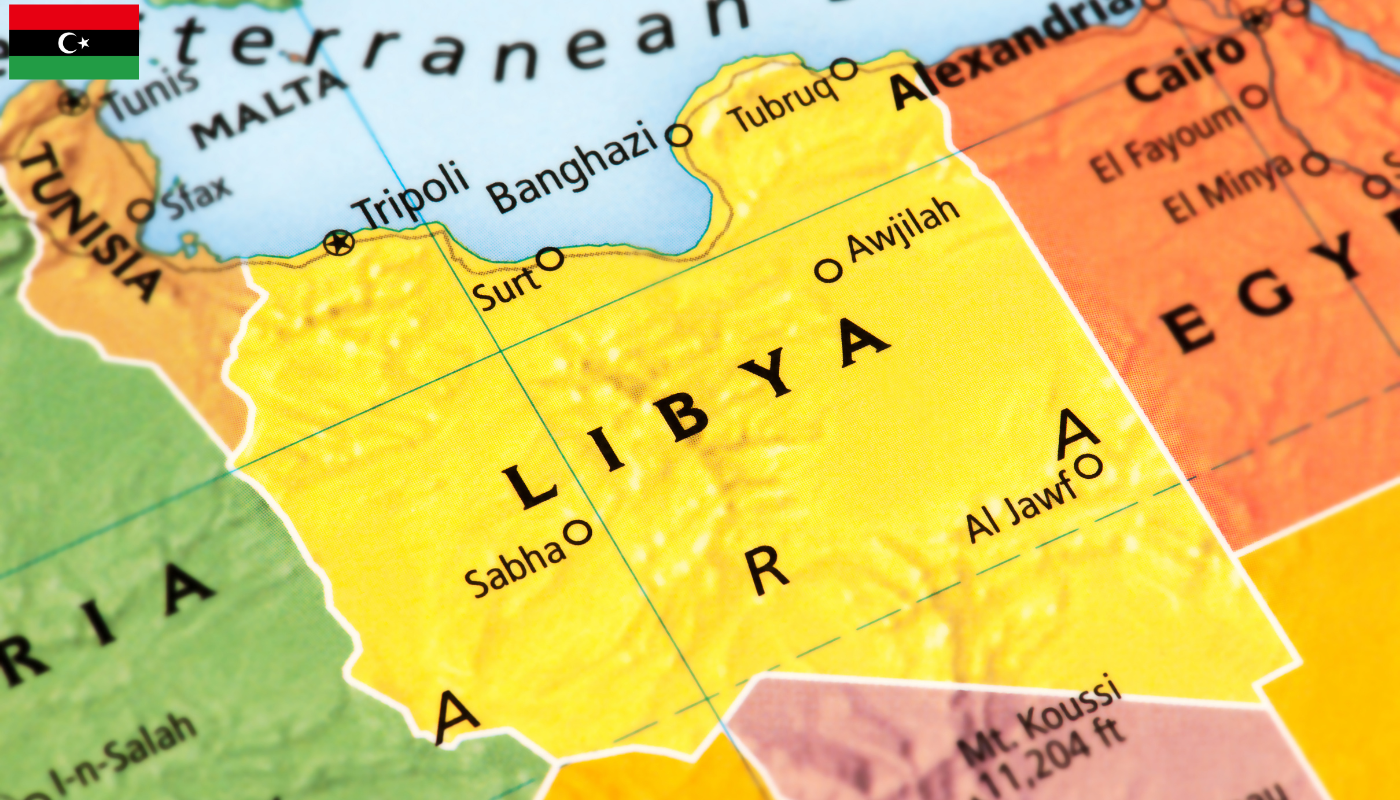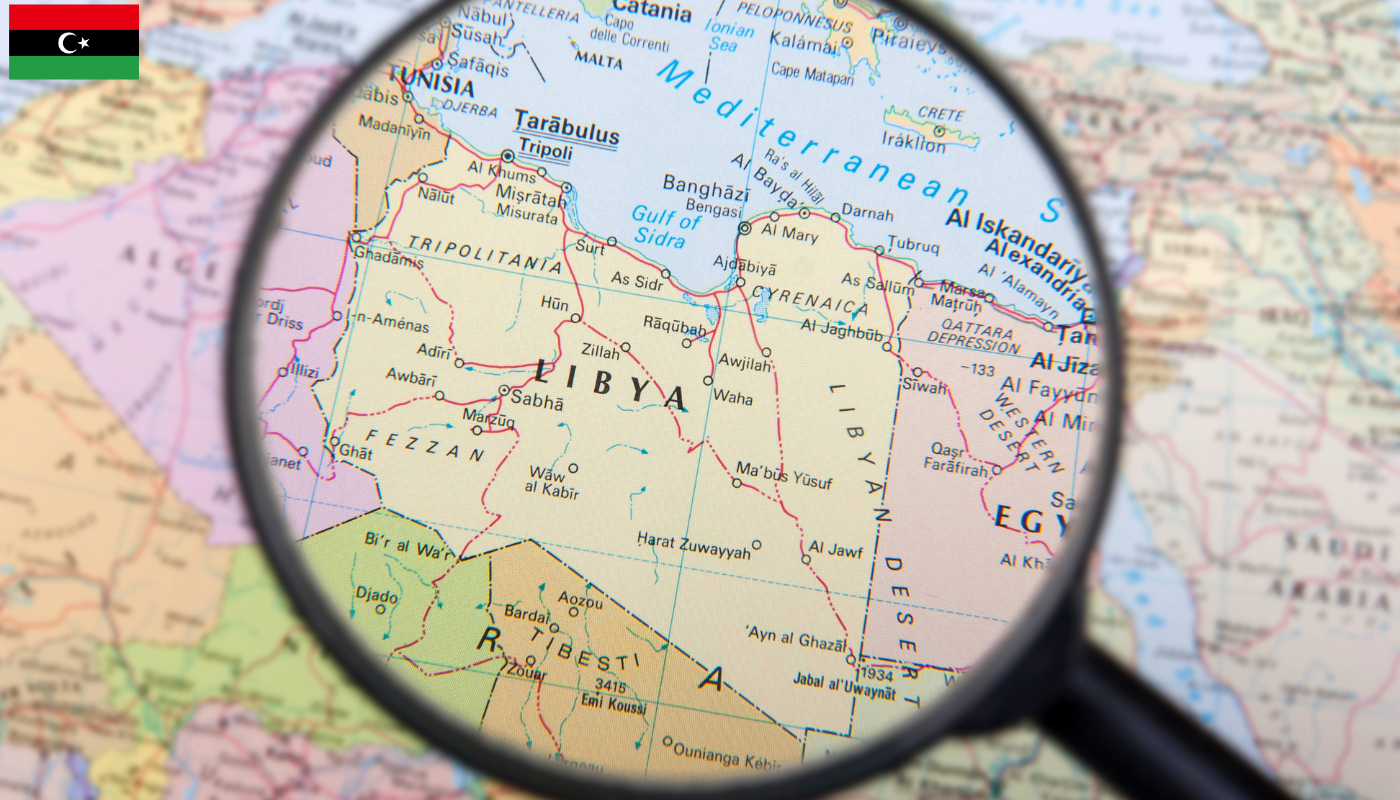Libya, a country shrouded in the mystery of ancient civilizations and modern geopolitical intrigue, occupies a distinctive position on the world map. Nestled at the crossroads of Africa and the Middle East, its geographical location has been a pivotal factor in its rich history, cultural diversity, and contemporary political landscape. Discover the exact positioning of Libya and how its strategic location has shaped its past, influences its present, and could determine its future in the global arena.
Geographical Position of Libya
Libya, a country with a rich history and diverse landscapes, is strategically positioned in the northern part of the African continent. It is bordered by the Mediterranean Sea to the north, providing it with an extensive coastline that has historically been a gateway for commerce and cultural exchange. This North African nation shares its land borders with six countries: Egypt to the east, Sudan to the southeast, Chad and Niger to the south, and Algeria and Tunisia to the west, making it the fourth largest country in Africa by area. Libya’s geographical positioning has played a pivotal role in its historical, economic, and social development, serving as a crossroads between the African and Arab worlds.
The vast Sahara Desert covers much of Libya, defining much of its landscape and climate. The desert is not just a barren wasteland but a region teeming with life and a diversity of cultures, especially in the thriving oases that dot the landscape. Despite the arid conditions, Libya boasts natural beauty ranging from the stunning Mediterranean coastline to the Akakus Mountains in the southwest, known for their prehistoric rock art. The country’s natural resources, particularly oil, have significantly influenced its economy, making Libya an important player in the global energy market. Its geographical location, combined with its oil wealth, has shaped Libya’s interactions on the international stage.
- The Mediterranean Sea coastline offers Libya access to numerous maritime activities and trade routes.
- Bordering six countries, Libya stands as a key land bridge connecting the African and Arab worlds.
- The Sahara Desert, covering a vast majority of the country, influences Libya’s climate and lifestyle.
- Libya’s natural resources, especially its oil reserves, are a cornerstone of its economy.
- The Akakus Mountains and other natural landmarks highlight Libya’s diverse geography and cultural heritage.
Unlock the Mystery: Where is Libya Located on the Map?
Libya, a country with a rich tapestry of history and culture, is strategically positioned on the map, marking its prominence in both ancient and modern narratives. This North African country is bordered by the Mediterranean Sea to the north, which has historically been a crucial maritime route for trade and cultural exchange. To its east, Libya shares borders with Egypt, a country with which it has shared millennia of history, from the Pharaonic to the modern era. On its western frontier, Libya is neighbored by Tunisia and Algeria, two countries with which it shares the Maghreb’s vast deserts and rich cultural heritage.
The southern borders of Libya touch the expansive Saharan desert, making it a neighbor to Niger and Chad. This positioning has not only geographical but also significant geopolitical implications, influencing Libya’s social, economic, and political interactions with these countries. The country’s vast desert interior has been a challenge for connectivity and governance, yet it holds a treasure trove of oil reserves, making Libya a pivotal player in the global energy market.
Understanding Libya’s location and its geographical neighbors is essential for grasping the complex socio-political dynamics that shape the region. The Mediterranean Sea to the north has been a gateway for European influences, while its vast land borders have facilitated both conflict and cooperation with its African neighbors. Libya’s strategic position has made it a nexus of cultural and economic exchange throughout history, a role that continues to define its place in global affairs.
| Direction | Bordering Countries | Geographical Feature |
|---|---|---|
| North | Mediterranean Sea | Maritime Border |
| East | Egypt | Land Border |
| South | Niger, Chad | Saharan Desert |
| West | Tunisia, Algeria | Land Border |
In providing a deeper understanding of Libya’s geographical context, it becomes evident how its location has been both a blessing and a challenge. The country’s access to the Mediterranean has facilitated trade and cultural exchanges, enriching its history. Conversely, its expansive desert interiors have posed significant challenges for connectivity and governance, yet harboring vast natural resources that have shaped its economic landscape. Libya stands as a testament to the enduring influence of geography on the fate of nations.
Libya’s Bordering Countries
Libya, a nation with a rich historical tapestry and vast deserts, is strategically positioned on the North African coast. It shares its borders with six countries, each contributing to its geopolitical and cultural landscape. To the east, Libya is bordered by Egypt, a country with which it shares a long history of cultural and political interactions. The western border is shared with Tunisia and Algeria, two nations that have played significant roles in the broader Arab and North African contexts. Libya’s southern borders touch Niger and Chad, introducing a blend of Saharan and sub-Saharan influences into the country’s cultural mosaic. Lastly, Libya’s southeastern border meets Sudan, adding another layer of historical and cultural complexity.
These bordering nations are not just neighbors but are integral to Libya’s identity and its interactions on the international stage. The shared histories, economic ties, and sometimes complex diplomatic relationships define much of the region’s current affairs. Understanding Libya’s position on the map and its bordering countries is essential for comprehending the country’s challenges and opportunities in both regional and global contexts.
| Country | Direction from Libya | Shared Features |
|---|---|---|
| Egypt | East | Long historical ties |
| Tunisia | West | Cultural and political interactions |
| Algeria | West | Significant in Arab and North African contexts |
| Niger | South | Saharan influences |
| Chad | South | Sub-Saharan connections |
Further Insights into Libya’s Neighboring Countries
The geographical location and bordering countries of Libya provide a fascinating lens through which to view its societal and political dynamics. These border relations are not static; they evolve with shifting political landscapes, economic needs, and social exchanges. The interactions with its neighbors have shaped Libya’s security, trade policies, and cultural exchanges, underlining the importance of understanding these relationships in depth. This regional interconnectivity suggests that events in Libya can have ripple effects across North Africa and beyond, underscoring the interconnectedness of nations in today’s globalized world.
Exploring the Impact of Border Dynamics
Delving deeper into the dynamics of Libya’s borders with its neighboring countries reveals a complex web of cooperation and tension. These borders are not just lines on a map but are vital lifelines for trade, cultural exchange, and sometimes conflict resolution. The Sahara desert, stretching across several of these borders, serves as both a barrier and a bridge, highlighting the dual nature of geographical features as obstacles and connectors. By exploring these relationships further, one gains a more nuanced understanding of Libya’s position within its regional context and the broader African and Arab geopolitical landscapes.
Libya in the African Context
Libya, a country shrouded in the rich tapestries of history and culture, stands as a testament to the resilience and complexity of the African continent. Located in the Maghreb region of North Africa, it is bordered by the Mediterranean Sea to the north, Egypt to the east, Sudan to the southeast, Chad and Niger to the south, and Algeria and Tunisia to the west. This strategic positioning has made Libya a crucial crossroads of civilizations for millennia, influencing and being influenced by the myriad cultures and peoples that have traversed its vast deserts.
The country’s topography is predominantly desert, with the Sahara occupying the majority of its land area. However, Libya’s geographical diversity also includes the fertile strip of the Mediterranean coast, which serves as the cradle of its population centers and agricultural hubs. The contrast between the verdant coast and the arid desert underscores the dual nature of Libya’s identity, both as part of the Sahara and the Mediterranean worlds.
Within the African context, Libya’s role has been multifaceted, contributing to both the continent’s challenges and its potential for growth. The nation’s vast oil reserves have positioned it as a key player in the global energy market, impacting economic trends not only in Africa but around the world. Despite its wealth in natural resources, Libya has also faced significant trials, from colonial domination to internal conflict, which have shaped its modern trajectory. These experiences reflect the broader struggles and resilience found across Africa, making Libya an integral part of the continent’s narrative.
Moreover, Libya’s historical significance, highlighted by ancient cities like Leptis Magna and Sabratha, speaks to its role in the development of civilization in Africa and beyond. These archaeological sites, along with the country’s involvement in the trans-Saharan trade routes, underscore Libya’s contribution to the cultural and economic exchanges that have defined the continent’s history.
| Feature | Description | Significance |
|---|---|---|
| Geographical Location | North Africa, bordering the Mediterranean Sea | Strategic position influencing trade and cultural exchange |
| Topography | Desert (Sahara) and Mediterranean coast | Dual identity and diverse ecosystems |
| Oil Reserves | Among the largest in Africa | Economic influence on global energy market |
| Historical Sites | Leptis Magna, Sabratha | Contribution to world heritage and understanding of ancient civilizations |
| Modern Challenges | Political instability and conflict | Reflects broader African and global issues |
Libya’s position within the African context is not just a matter of geography but of historical, economic, and cultural significance. Its vast deserts and rich coastlines have been the backdrop to stories of empire and trade, of wealth and conflict. As Africa continues to navigate its path in the modern world, the story of Libya and its challenges and triumphs remains an essential chapter in understanding the continent’s past and its potential future. The insights gained from examining Libya’s place in Africa can provide valuable lessons in resilience, diversity, and the importance of strategic connections in shaping the destinies of nations.
Coastal Features of Libya
Libya, a country endowed with a significant portion of the Mediterranean coastline, presents a fascinating juxtaposition of arid landscapes and vibrant coastal ecosystems. Stretching over 1,770 kilometers, Libya’s coast is the longest of any African country on the Mediterranean Sea. This extensive coastline is home to a variety of geographical features, from pristine beaches to rugged cliffs, offering a glimpse into the country’s diverse natural beauty. The coastal region benefits from a milder Mediterranean climate, in contrast to the harsh desert conditions that dominate much of the country’s interior.
The Libyan coast is notably home to the Gulf of Sidra, a prominent inlet of the Mediterranean Sea, which has played a crucial role in both the country’s ecology and its economy. The gulf is renowned for its rich fishing grounds, supporting local communities and contributing to Libya’s food supply. Additionally, the coastal city of Benghazi, Libya’s second-largest city, acts as a vital economic hub, with its port facilitating significant trade and commerce. The juxtaposition of ancient ruins and modern urban development across Libya’s coast further highlights the region’s unique blend of history and contemporary life.
Moreover, the Libyan coastline is dotted with several key archipelagos and islands, each with its own unique ecological and cultural significance. These islands serve as important nesting sites for a variety of bird species and are critical for biodiversity conservation in the Mediterranean. The coastal waters off Libya are also part of a crucial migration route for several marine species, emphasizing the global ecological importance of Libya’s coastal habitats.
| Feature | Location | Significance |
|---|---|---|
| Gulf of Sidra | Central Coast | Key fishing grounds, economic importance |
| Benghazi | Eastern Coast | Economic hub, major port city |
| Tripoli | Northwest Coast | Capital city, administrative and economic center |
| Farwa Island | West of Tripoli | Biodiversity hotspot, bird nesting site |
| Sabratha | West Coast | Ancient ruins, UNESCO World Heritage Site |
The coastal zones of Libya, with their rich historical legacies and natural resources, play a pivotal role in the country’s identity and livelihood. These regions not only offer insights into Libya’s ancient civilizations through archaeological sites like Leptis Magna and Sabratha but also sustain contemporary economic activities through ports, fishing, and tourism. Understanding the coastal features of Libya is essential to appreciate the country’s complex interplay between its historical heritage, natural beauty, and economic development.
Key Cities and Their Locations
Libya, a country with a rich history and strategic importance in North Africa, is home to several key cities that contribute to its unique identity and economic development. Tripoli, the capital, is not only the administrative and political hub but also the heart of Libya’s economic activities. Nestled on the northwest coast, it offers a blend of modernity and tradition, with its bustling markets and Italian colonial architecture.
Benghazi, Libya’s second-largest city, is located on the east coast. Known as the cradle of the Libyan revolution, it is a major economic center, particularly in the oil industry. Misrata, situated midway between Tripoli and Benghazi, serves as a vital commercial and industrial city, with its port playing a crucial role in Libya’s trade. In the south lies Sabha, a key city in the Sahara desert acting as a crossroads for trade routes across the vast desert expanse. Lastly, Bayda is noted for its cooler climate and historical significance, offering a different facet of Libyan urban life.
These cities, each with their distinct characteristics, play pivotal roles in shaping Libya’s geopolitical and cultural landscape. Understanding their locations and contributions provides insights into the country’s complexities and the challenges it faces in the modern era.
| City | Location | Significance |
|---|---|---|
| Tripoli | Northwest Coast | Capital and Economic Hub |
| Benghazi | East Coast | Economic Center, Oil Industry |
| Misrata | Midway between Tripoli and Benghazi | Commercial and Industrial Center |
| Sabha | South, Sahara Desert | Trade Crossroads |
| Bayda | Eastern Cyrenaica | Historical and Cultural Significance |
In conclusion, the cities of Libya serve as the backbone of its national identity, each contributing in its unique way to the fabric of the nation. From the bustling streets of Tripoli to the historical richness of Bayda, these cities are key to understanding Libya’s past, present, and future. As the country navigates through periods of transition, the role of these urban centers in its development cannot be overstated.
Thus, exploring Libya’s key cities and their locations offers valuable insights into the nation’s complex dynamics and highlights the diverse characteristics that define this North African country.






